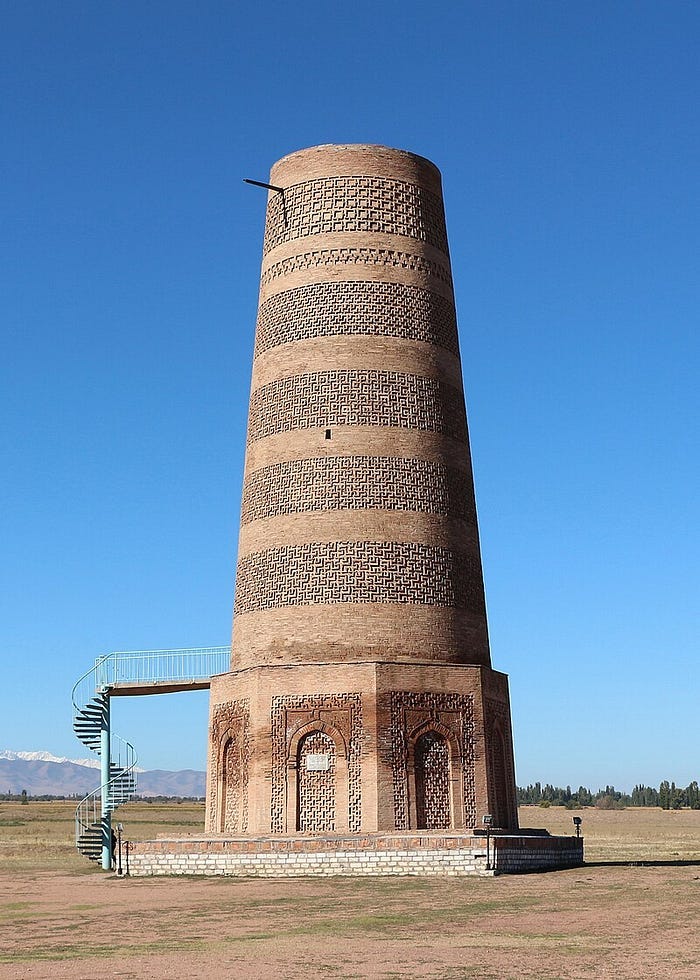
A tower stands in barren grasslands around 80 kilometers east of Kyrgyzstan’s capital, Bishkek, near the town of Tokmok. Locals call it the Burana Tower. According to a legend, a Khan who governed the region in the tenth century built the monument. He had a daughter and hosted a big party when she was born. The ruler invited prominent fortune tellers of the land to join the celebrations.
He wanted to know what the future held for his baby girl. The soothsayers were unanimous: she would have a long, healthy life and do great things. Among them, one elderly man disagreed. The old fortune teller predicted that the girl would die at sixteen from a spider bite.
Shocked, the Khan immediately ordered the construction of a tall tower for the princess that no spider could reach.
When she turned sixteen, Khan was convinced that his daughter was safe because of the security measures he had implemented. On her birthday, he presented her with a basket of the choicest fruits of the land. Unfortunately, a spider lurked in the basket and bit the princess, causing her death. Unable to cope with the shock, the Khan died as well, and a portion of the tower collapsed.
When I first heard about this tragic legend, I assumed it was a moral lesson for kids: no matter how hard they try, they can’t escape their fate. The message wasn’t positive. But, looking at the story through a historical lens, the tower's fate symbolizes the rise and fall of the once-thriving Silk Road city of Balasagun, which once stood around it.
Mahmud al-Kashgari, a polymath and cartographer from the eleventh century, included Balasagun at the center of his world map, suggesting that the city had a rich history and was significant during his time. But now, only a tower remains. What happened to this enigmatic metropolis in the Eurasian Steppes?
To understand Balasagun's importance during the Middle Ages, let us first examine how the city was rediscovered in modern times.
Reminder: By choosing a paid membership (just $5 a month or $50 annually), you're helping amplify voices that history books too often overlook. Your support means these stories get the attention they deserve.
You’ll gain access to tons of members-only content👇
Full-length deep dives into untold stories: no paywalls, no cuts.
The entire archive of extraordinary tales from the Ice Age to the Fall of the Mongol Empire, the hottest archaeological finds, and the appetizing history of food.
Early access to special editions, be the first to dive in.
Join lively discussions in members-only posts and subscriber chats.
Keep reading with a 7-day free trial
Subscribe to Forgotten Footprints to keep reading this post and get 7 days of free access to the full post archives.



